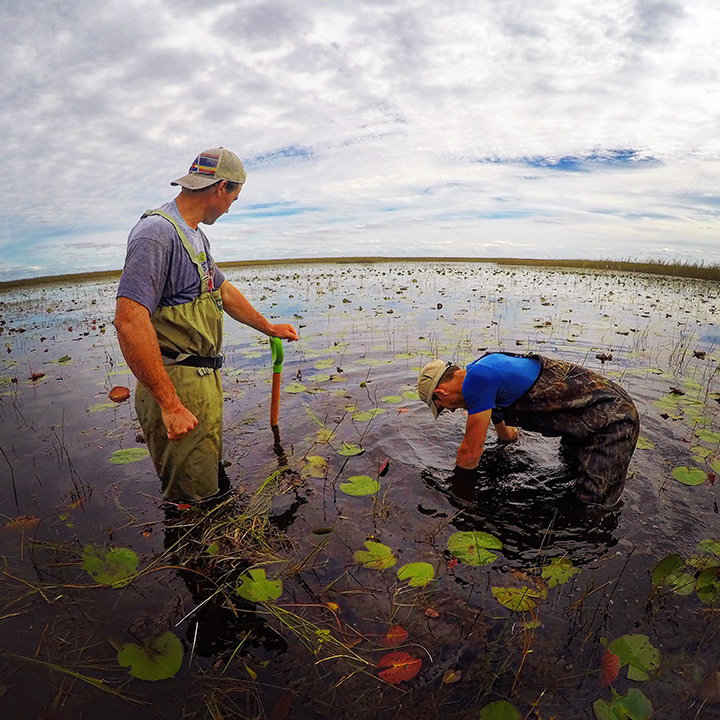
Encompassing nearly 4 million acres of historic subtropical wetlands, South Florida is home to the Greater Everglades Ecosystem which flows from the Kissimmee River basin to Lake Okeechobee and down through the central Everglades to the southern coast and Florida Bay. This system of rivers, lakes, wetlands, and estuaries is home to more than 60 threatened and endangered species. In 2000, Congress authorized the Comprehensive Everglades Restoration Plan (CERP) to restore the Florida ecosystem. The CERP is the largest hydrologic restoration project ever undertaken in the United States.
CES strongly supports the restoration of the Greater Everglades Ecosystem by conducting the highest-quality research in areas of wetland ecology and in providing technical expertise to the public, policy-makers, and the scientific community. CES is actively engaged with these stakeholders in the dissemination of the best science through research, educational courses, workshops, and outreach programs. CES has well-established synergistic research partnerships and collaborations with many Federal and State agencies, local government, NGOs, and other Universities currently involved in the science of the restoration.
The
Coastal Resilience Research Lab
is a research group directed by Director Dr. Colin Polsky within the Center for Environmental Studies. The lab examines human-environment interactions in the context of changing climates. The primary research focus is on how people perceive, create, and respond to the effects of sea-level rise and other climate challenges.
CES, in partnership with the SFWMD, also manages the
Riverwoods Field Lab
as a research and education center as well as provides support staff for the scientific evaluation program for the
Kissimmee River Restoration.
Finally, CES collaborates with our FAU colleagues in Environmental Sciences. Their highest-quality research in areas of wetland ecology are outline below:
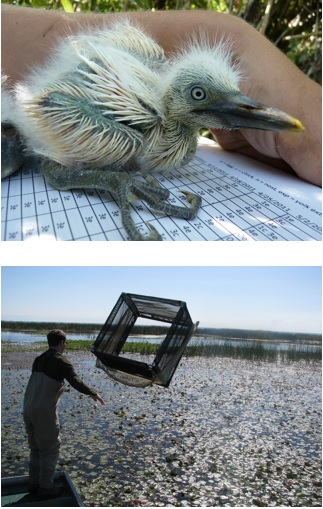 Dr. Dale Gawlik directs the
Avian Ecology Laboratory
and has broad research interests are in avian ecology, wetland ecosystems, and restoration ecology. The main research questions being addressed in the lab focus on (1) mechanisms by which fluctuating wetlands produce food for wading birds, (2) behavioral and physiological responses of wading birds to prey limitations, and (3) predictive habitat models that are linked to water management regimes. In recent years the lab has added questions about (4) invasive species in wetlands, (5) the use of created wetlands by aquatic birds, and (6) the drivers of wading bird populations in estuarine ecosystems. An increasingly common thread emerging among all these questions is the response of wetland birds to human-induced rapid environmental change. For more information on FAU’s Avian Ecology Lab visit:
www.biology.fau.edu/avian-ecology/
Dr. Dale Gawlik directs the
Avian Ecology Laboratory
and has broad research interests are in avian ecology, wetland ecosystems, and restoration ecology. The main research questions being addressed in the lab focus on (1) mechanisms by which fluctuating wetlands produce food for wading birds, (2) behavioral and physiological responses of wading birds to prey limitations, and (3) predictive habitat models that are linked to water management regimes. In recent years the lab has added questions about (4) invasive species in wetlands, (5) the use of created wetlands by aquatic birds, and (6) the drivers of wading bird populations in estuarine ecosystems. An increasingly common thread emerging among all these questions is the response of wetland birds to human-induced rapid environmental change. For more information on FAU’s Avian Ecology Lab visit:
www.biology.fau.edu/avian-ecology/
Dr. Gawlik is also the Director of the Environmental Science Program, an inter-disciplinary program designed to provide students with specialized training in Environmental Sciences. All the departments in the Charles E. Schmidt College of Science participate in the program, as do several other colleges at FAU. For more information on FAU’s Environmental Science Program visit: www.science.fau.edu/biology/envirosci/
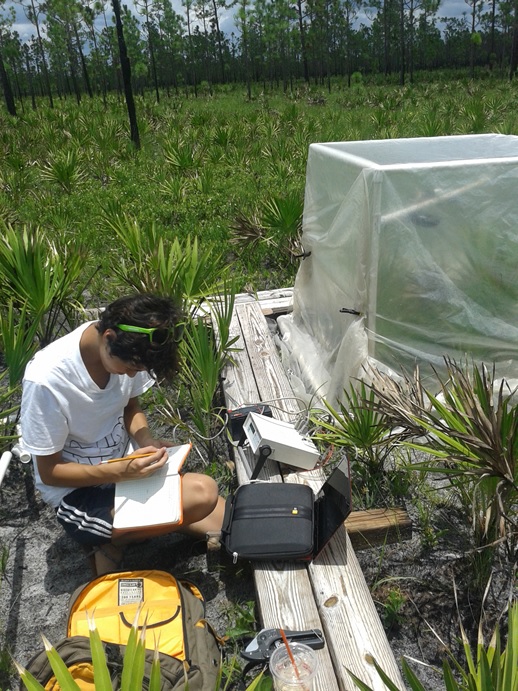
Dr. Brian Benscoter’s Plant Ecology Laboratory investigates linkages between community and ecosystem ecology, using a bottom-up approach to integrate population and community scale processes to understand ecosystem dynamics. His research is primarily focused on: 1) spatio -temporal patterns and mechanisms of plant community development, 2) scaling of community processes to ecosystem function with a focus on carbon cycling, and 3) the influence of disturbance (e.g., fire and drought) and climate change on ecosystem structure, function, and resilience. They use theoretical, empirical, and modeling approaches with field and laboratory-based studies to address these questions, incorporating a wide variety of research techniques.
For more information on FAU’s Plant Ecology Lab visit: www.science.fau.edu/benscoterlab/

Dr. John Baldwin oversees the Population and Conservation Genetics Laboratory, which promotes the conservation biology of marine and aquatic organisms. The research is laboratory and field-based, and uses quantitative and experimental approaches to address hypotheses of population genetic structure, community and population ecology, reproduction, molecular systematics, phylogenetics , and biogeography.
Examples of current research projects include genetic population structure of wahoo (Acanthocybium solandri), population ecology and conservation genetics of the Bald Eagle (Haliaeetus leucocephalus), genetic identification/ecology of invasive snails in the Everglades with with Dr. Dorn (FAU), genetic analysis of paternity and potential hybridization in a population of Atlantic spotted dolphins (Stenella frontalis) in the Bahamas in collaboration with the Wild Dolphin Project, and population genetics of loggerhead (Caretta caretta) and green (Chelonia mydas) sea turtles in the Dry Tortugas with Dr. Hart (USGS).
For more information on FAU’s Population and Conservation Genetics Lab visit: www.biology.fau.edu/directory/baldwin/index.php
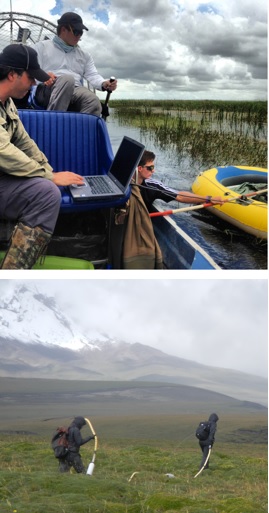
The Environmental Geophysics Laboratory, directed by Dr. Xavier Comas, uses state-of-the-art hydrogeophysical methods to non-invasively investigate a wide array of environmental issues at both the laboratory and field scales with emphasis in peatlands ( Peatland Geophysics ) and karst environments ( Karst Geophysics ). For example, the Lab is currently conducting several studies related to carbon dynamics in peat soils of the Everglades with particular emphasis on the spatial and temporal variability of biogenic gases within the peat matrix (mainly methane and carbon dioxide) and how climate change may affect such dynamics. The work builds on the successful results from boreal peatlands in Maine and Minnesota from Comas and colleagues that have proved for more that a decade the ability of near surface geophysics for developing conceptual models for peatland initiation and evolution, and pioneered the use of these techniques for non-invasively imaging and quantifying biogenic gas distribution at a spatial resolution previously unseen using traditional methods. Such approach has already been successfully applied to the Everglades to accurately image and estimate carbon stocks, and to quantify carbon fluxes while demonstrating the difficulties to properly define representative average values that capture the spatial and temporal heterogeneity of such fluxes. The approach has also recently been successfully applied to several tropical systems in Indonesia and Ecuador in order to further develop the methodology for a wider variety of peatlands from several latitudes worldwide. This work is currently funded by several federal agencies including NOAA, DOE, USGS, USDA and NSF .
For more information on FAU’s Environmental Geophysics Lab visit: www.geosciences.fau.edu/geophysics-lab/
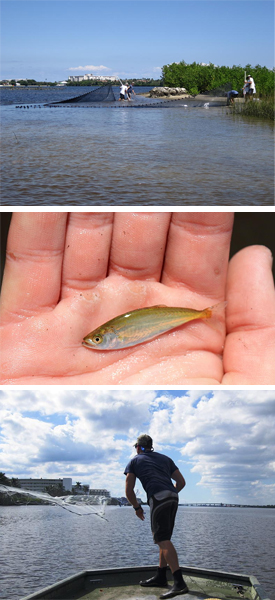
The preeminent research theme of FAU's Biogeography Lab, directed by Dr. Scott Markwith, is the conservation of species, community, and genetic diversity in the face of unprecedented natural system alteration, especially in freshwater and coastal systems disturbed by development, invasive species, damming, canalization, levees, and other hydrologic alterations. The practice, process, and effects of environmental restoration are increasingly important globally and in particular in South Florida, e.g. the Greater Everglades Ecosystem. Much of the lab's current research program includes work with the Everglades, Kissimmee River, and Lake Worth Lagoon restoration projects.
The lab approaches research problems by bridging disciplinary boundaries and utilizing theory, methodology, and techniques from Biogeography, Geomorphology, GIS/Remote Sensing, Population and Conservation Genetics, Ecology, and others. Ongoing research projects involving current and former members of the Biogeography Lab include:
-Monitoring utilization of restored habitats by juvenile and adult fish species common in the Central Lake Worth Lagoon (with FWC).
-Assessing integration of restored inter- and sub-tidal habitat into the larger estuarine ecosystem by tracking fish behavior with underwater acoustic telemetry (with Anthony Planas).
-Impact of an exotic gastropod, Pomacea maculata , invasion on three of CERP’s main environmental restoration goals: a) function of invaded stormwater treatment areas for nutrient sequestration, b) function of key vegetation communities, and c) conservation of the endangered Snail Kite’s (Rostrhamus sociabilis) primary food source, the native gastropod Pomacea paludosa (with Dr. Dean Monette).
-Habitat suitability analysis and resource management strategy assessment for the endangered Bartram's Scrub Hairstreak (Strymon acis bartrami) butterfly (with Alana Edwards).
-Habitat suitability analysis and resource management strategy assessment for the endangered Florida Grasshopper Sparrow (Ammodramus savannarum floridanus) and its potential invasive predator the red imported fire ant (Solenopsis invicta) (with Danielle Romais).
-
Everglades-Pantanal Initiative focused on conservation of wildlife in conflict with humans, in collaboration with Julio de Souza of Universidade Federal de Mato Grosso do Sul.
For more information about the Biogeography Lab, please visit: www.biogeographylab.com/
Dr. Erik Johanson studies human-environment interaction and environmental change across the Holocene. His interests center around how people shape their environments and manage climate stress in the tropics over the last several thousand years. Dr. Johanson's Environmental Change Laboratory often collects and analyzes sediment cores from lakes and wetlands in Central and South America, the Caribbean, and Florida.
For more information about the Environmental Change Laboratory, please visit: www.geosciences.fau.edu/envchange-lab/
Dr. Michael McCoy develops and implements experimental and statistical approaches to link empirical data to ecological and evolutionary theory.
For more information about the Quantitative Ecology Lab, please visit: www.michaelwmccoyphd.com
Dr. Tiffany Roberts Briggs' primary research interest is the dynamics/evolution of beach morphology in response to natural (e.g., storm impact/recovery) and anthropogenic (e.g., coastal engineering) influences.
For more information about the Coastal Studies Lab, please visit: www.geosciences.fau.edu/coastal/
The Center for Water Resiliency and Risk Reduction (CWR3), directed by Dr. Fred Bloetscher, was established at Florida Atlantic University to help local communities develop mitigation strategies and participate in the National Flood Insurance Program (NFIP) Community Rating System (CRS). Specifically, CWR3 is a clearinghouse for watershed master planning tools and policies, including best available mapping data, outreach/public education materials for flood risk, incentives to reduce future losses, and mitigation strategies, particularly green infrastructure options.
For more information about the Center for Water Resiliency and Risk Reduction, please visit: www.fau.edu/engineering/research/cwr3/
The Institute for Sensing and Embedded Network Systems Engineering (I-SENSE), directed by Dr. Jason O. Hallstrom, serves as a technology clearinghouse for sensing, communication, and data management technologies, providing relevant expertise and engineering support. Additionally, the institute serves as an interdisciplinary hub, cultivating research, education, and service initiatives that cut across academic units; and provides the administrative support necessary to sustain those initiatives.
For more information about the Center for Water Resiliency and Risk Reduction, please visit: www.fau.edu/isense/